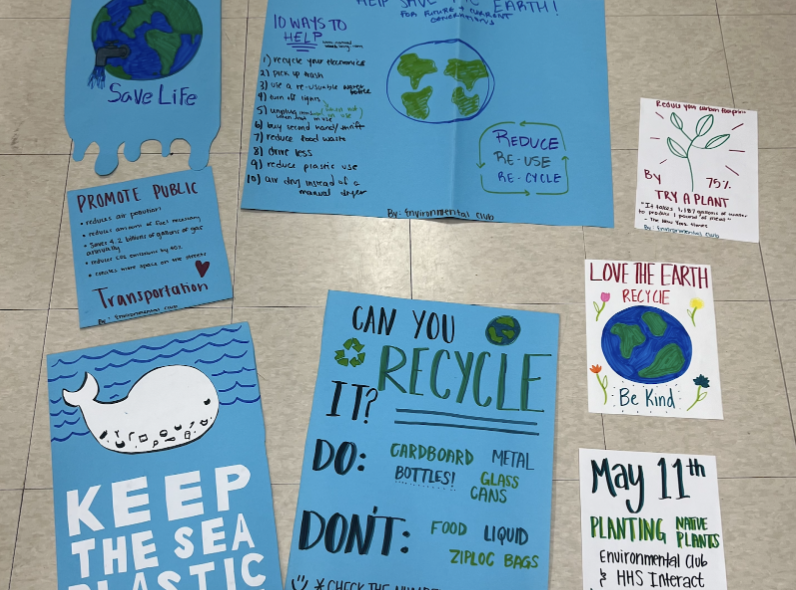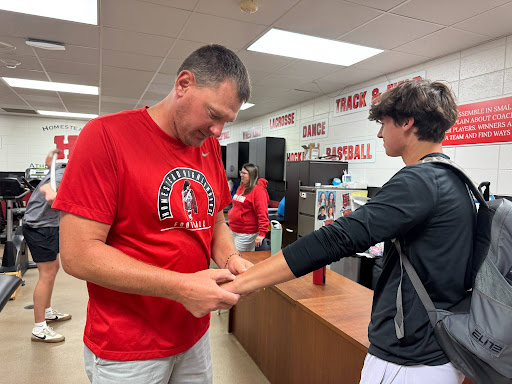The green movement, or environmental movement, is a diverse social and political effort to address environmental issues and promote sustainability. Its goals include conserving natural resources, reducing pollution, protecting ecosystems, and mitigating the effects of climate change. There has been a large increase in the number of students in high school and college supporting this movement. Thus, colleges, universities, and schools are now enriching their efforts to support this movement by increasing education and accessibility for these topics.
More and more schools are now taking into consideration the effects of individuals on the environment, and students are the ideal target to change the outcome of this situation. Summer Rilling, senior and vice president of the environmental club, said, “Students being involved in this movement is the most important part. We are the generation that can make a change, and there are so many small things that we can do to make a difference. Educating yourself is the most important way to be involved.”
Students are actively looking for universities when choosing a college that promotes sustainability in their operations as the world grows more environmentally concerned.
According to Tracy Grace, science teacher, “It is extremely important to be educated about environmental issues because young people will soon be the adults in charge of taking care of our planet. For that reason, students need to be educated now so they know what’s happening in the world right now, which will affect their future lives no matter where they live – unless they also figure out how to live on another planet.”
There are many ways students can play a part in this green movement.
Grace has provided examples, such as: “Everyday choices about their water usage, the amount of waste they generate, and recycling are specific and easy ways to make a small difference. Many small differences create noticeable and impactful differences.”
Colleges and universities are looking for ways to implement small changes that can make a big difference.
Olivia Boyle, senior, mentioned, “There are so many things that students can do to help the environment. My biggest thing is to consume less and make the products that you use more sustainable. Also, students should be educated to know how they can make swaps for better products.” Rilling said, “Learning about the importance of the environment is essential. We as students can make a difference by being able to influence others and spread the message.”
College students are taking a stand in the environment. On March 20, 2024, students attending the University of Florida led a climate action campaign. Gov. Ron DeSantis is trying to block the clean energy transition, and the University of Florida students are adopting Green New Deal measures and showing how public schools can also lead to climate action.
“Our goal is to center distributed organizing and put power in the hands of young people themselves,” Engelfried said. Their movement showed other public colleges and universities that not only private institutions can have successful protests.
Colleges and universities are also looking at the costs of implementing these practices into their daily life. Crystal Smith, author of “Earth Day: Commitment to Sustainability” said, “Should universities be devoted to committing to more sustainable practices, even if it costs them more financially? Without a doubt, the answer is yes! Universities have a moral obligation to set an example in the promotion of sustainability as institutions of knowledge and innovation.”
Transportation is another focus area. Schools encourage walking, biking, carpooling, and the use of public transit to reduce emissions from commuting. Some have even established bike-sharing programs and installed electric vehicle charging stations on campus.
The Environmental Club at Homestead made posters to hang up around school to draw awareness to small issues. One of the signs talked about saving water, one talked about plastic in the ocean, and one talked about recycling. In the past, they have had meetings for numerous different topics to educate students on environmental switches students can make. The long-term advantages of switching to more sustainable methods far outweigh the short-term costs, and students have been making a difference little by little through this club.
“Sustainable practices can develop public health, mitigate environmental inequalities, and encourage community empowerment and engagement.” Rebekah Weaver, the author of Sustainable Solutions: The State of UI’s Recycling Reboot, said.
By adopting these green practices, schools are actively contributing to environmental sustainability and educating students about the importance of protecting the planet. Through these efforts, they are helping to shape a generation that values and prioritizes sustainability in their personal and professional lives.








